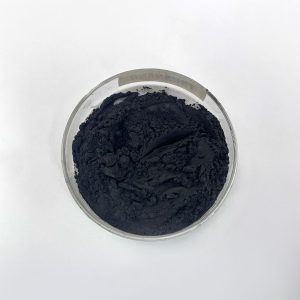1. Introduction
Just 36 hours ago, SpaceX quietly filed a patent for a new regeneratively cooled rocket nozzle made entirely via titanium powder additive manufacturing—and no, your coffee hasn’t kicked in yet, but this is real life. Forget sci-fi; we’re living in an era where titanium powder isn’t just sitting in a lab—it’s launching humanity toward Mars. And while you were debating whether your protein powder contains molybdenum (it probably doesn’t), engineers were printing jet turbine blades with spherical titanium powder that costs more per kilogram than your monthly rent.

So, what’s all the hype about? Titanium powder—particularly in its ultra-pure, gas-atomized, or HDH forms—isn’t your average metal dust. It’s the secret sauce behind lightweight, corrosion-resistant, high-strength components that keep planes in the sky and satellites orbiting Earth. And if you’ve ever wondered how to buy titanium powder without selling a kidney, you’re in the right place.
2. Why Titanium Powder? The Aerospace Obsession
Aerospace engineers don’t fall in love easily—but when they met titanium powder for 3D printing, it was basically a rom-com. Titanium alloy powder, especially Ti6Al4V (also called Ti64 powder), offers an unbeatable strength-to-density ratio, biocompatibility, and resistance to extreme temperatures. That’s why it’s the go-to for everything from landing gear brackets to combustion chambers.
Unlike traditional machining—which wastes up to 90% of expensive titanium stock—additive manufacturing uses only what’s needed. Enter titanium powder additive manufacturing: layer by layer, laser by laser, building complex geometries that were once impossible. And not just any powder will do. You need spherical titanium powder with tight particle size distribution (usually 15–45 microns) to ensure smooth flow and dense sintering. Gas atomized titanium powder delivers exactly that, while HDH titanium powder (hydrogen-decrepitated) is cheaper but less ideal for high-end aerospace apps.
3. The Real Cost of Going Interstellar (Or Just Flying First Class)
Let’s talk turkey—or rather, titanium powder price per kg. As of this week, pure titanium powder runs anywhere from $150 to $300/kg, depending on purity and morphology. But Ti6Al4V powder price? Buckle up: $300 to $600/kg. Yes, you read that right. And if you’re sourcing international titanium powder from a reputable titanium powder supplier, expect lead times longer than your Netflix watchlist.

Why so pricey? Blame the energy-intensive Kroll process, stringent aerospace certifications, and the fact that producing spherical titanium powder requires inert atmospheres and precision equipment. Still, compared to wasting solid billets, 3D printing with titanium 3D printing powder can slash material costs by 70% over time. So while titanium powder cost stings upfront, it pays off in performance and efficiency.
4. Beyond Ti64: The Titanium Powder Family Reunion
Ti6Al4V may be the superstar, but the titanium powder family has deep bench strength. Need extreme hardness? Try titanium carbide powder or titanium nitride powder as coatings or additives. Working on armor or cutting tools? Titanium diboride powder (TiB2 powder) offers insane wear resistance—though its titanium diboride price will make you wince.
And let’s not forget the oddballs: titanium flash powder (pyrophoric—handle with care!), titanium nanopowder for catalysis, and even burnt titanium powder coat for artistic finishes. Meanwhile, TiO2 nano powder remains the sunscreen MVP, but that’s a whole other beach day.
5. Molybdenum & Tungsten: Titanium’s Heavyweight Roommates

While titanium powder handles the ‘light but tough’ gigs, molybdenum powder and tungsten powder step in when things get seriously hot. Molybdenum metal powder (moly powder) thrives above 1,000°C—perfect for furnace parts or aerospace heat shields. Dry moly powder and molybdenum disulfide powder (MoS2 powder) are also legendary dry lubricants, especially where oil would vaporize.
Then there’s tungsten powder—the heavyweight champ. With the highest melting point of all metals, tungsten metal powder is used in radiation shielding, kinetic penetrators, and yes, even tungsten sharpening powder for elite tooling. Global Tungsten & Powders Corporation dominates this space, offering everything from spherical tungsten powder to fused tungsten carbide powder for thermal spray applications. Tungsten powder price per kg? Often $50–$150, but tungsten carbide powder price per kg can hit $100+ depending on cobalt content.
Fun fact: Some next-gen rocket nozzles now blend titanium alloy powder with tungsten carbide powder to balance weight and heat tolerance. Because sometimes, you need both grace and grit.
6. Where to Buy Without Getting Scammed (or Arrested)
Buying titanium powder isn’t like ordering socks online. Due to export controls (yes, titanium powder is ITAR-regulated in the U.S.), you’ll need proper documentation. Reputable titanium powder suppliers like Carpenter Additive, AP&C (now part of GE), or TLS Technik offer certified batches with full traceability.
When you search ‘buy titanium powder’ or ‘titanium powder for sale,’ verify specs: Is it gas atomized? Spherical? Oxygen content below 800 ppm? Don’t confuse titanium dioxide powder (TiO2 powder)—used in paint and sunscreen—with reactive titanium metal powder. One whitens your walls; the other might ignite if mishandled. Also, avoid sketchy listings for ‘titanium dust’—that’s not a technical term, and it’s probably not safe.
7. Conclusion
Titanium powder isn’t just metal in a fancy form—it’s the enabler of lighter aircraft, longer-lasting implants, and faster space travel. Whether you’re weighing titanium powder uses for medical devices or comparing ti powder price against molybdenum powder price, one thing’s clear: the future is printed, powdered, and titanium-coated. So next time someone asks, ‘What is titanium powder worth?’—just smile and say, ‘About one Mars mission.’
Our Website founded on October 17, 2012, is a high-tech enterprise committed to the research and development, production, processing, sales and technical services of ceramic relative materials such as Unlock. Our products includes but not limited to Boron Carbide Ceramic Products, Boron Nitride Ceramic Products, Silicon Carbide Ceramic Products, Silicon Nitride Ceramic Products, Zirconium Dioxide Ceramic Products, etc. If you are interested, please feel free to contact us.
